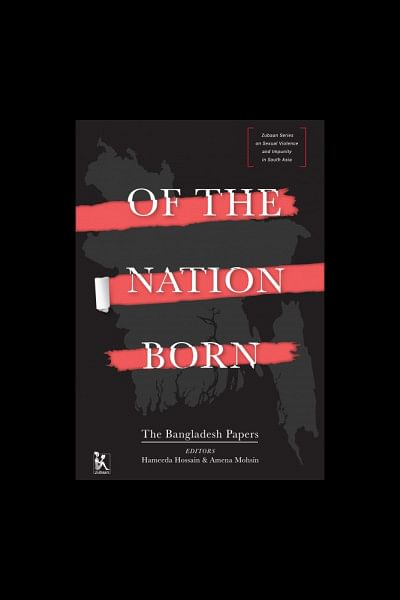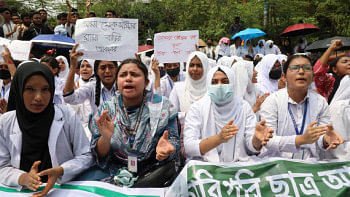Sexual Violence through the Decades

Of the Nation Born: The Bangladesh Papers edited by Hameeda Hossain and Amena Mohsin is part of the Zubaan Series on Sexual Violence and Impunity in South Asia. The words 'sexual violence and impunity' are operative in this series, and the editors have put these terms together with the sense of nation, including the war of liberation, as well as the violence that continues to be unleashed on women of different communities. The chapters that comprise the volume reflect assiduous research which together put into question our notions of nationalism, our sense of rights and the safety and security of our citizens. While violence against women is the main focus of the book, this violence is seen to be perpetrated within a lot of other factors such as nationality, community and differences of class and language. The violence committed against women thus constitutes a narrative of social exclusions which the state and its law enforcing agencies, including its legal structures, seem to have failed to address.
Recent statistics regarding the position of women in Bangladesh are indeed startling and reveal the vulnerability of women in the very intimate sphere of marriage and the family, and in the public sphere, from educational institutions to places of work. The book takes us to the wider social and political ramifications of such violence, and by gendering nationalist narratives, problematises the narrative of liberation, growth and development.
The book is divided into two sections, the first consisting of articles by individual scholars and the second being a compendium of interviews and first-person narratives. The reader can however look at the first section in 3 parts: the first three chapters, Chapters 4-6 which form a hiatus or a bridge and the chapters 7 and 8, bringing back to focus the situation in the Chittagong Hill Tracts (CHT).
The first three chapters deal with the history of rapes committed during the 1971 war of liberation. The first article in the book, “Gendered States,” written by Dina Siddiqi, traces a genealogy of the literature on violence, mainly academic, but also looking at the work of NGO's and questions and issues raised by the women's movement. She begins with the revival of the interest in birangonas¸ which she reckons is part of an international interest in rape as a war crime in the 1990's, in response to the events in the former Yugoslavia as well as the Congo and Rwanda. The largely-silenced birangona was brought back to nationalist narratives, and the many facets of this 'bringing back' are examined here. The demand for justice and reparation, which perhaps began with the Gano Adalat led by Jahanara Imam and has been followed in the recent war crimes trials have also been analysed. But perhaps the most interesting part of the genealogy that the article draws is the figure of the birangona herself and the ways in which she is brought into the discourse. The emerging literature on birangonas is guided by a feminist approach to national history, and Siddiqi's article helps to limn a feminist contour for the nation.
Siddiqi's article points to the silences and obfuscations that still mark the history of rape in 1971. She goes on to look at the history of rape and abduction in the CHT that continues, and this other instance of state-sponsored violence can be seen as a continuation of the tortures inflicted on women in times and spaces of conflict, as well as in the formation of nations and states.
The juxtaposition of rapes in 1971 and the ongoing crisis in the CHT is followed further in Amena Mohsin's article “The History of Sexual Violence, Impunity and Conflict.” This structure draws the reader away from a comfortable position of decrying the violence unleashed on “our” women by the Pakistanis, but asks him/her to look at the violence that the Bangladesh nation perpetrates on “other” women. It forces us to look at the limitations of citizenship, and the vulnerabilities of women's bodies, which, as Mohsin reminds us, are supposed to be the carriers of culture, and hence violation of these bodies means an attack on the enemy. Mohsin's article is illustrated by first-person interviews of victims of war rape both in 1971 and in contemporary CHT, and questions what reparation and justice may mean for these women.
The third article Bina d'Costa's “Birangona” looks closely at the trial procedure, putting it into a wider context, by bringing in the Cambodian war crimes trials. “Bearing witness” is a problematic gesture, somehow making the woman's body a site of examination where the history of the nation is put through a fresh perusal. The very term birangona is under question as the state seeks to provide reparation not as birangona to these women, but as muktijoddha. Who is a freedom fighter needs to be determined, and the very inclusion of birangonas into muktijoddhas perhaps calls for a fresh examination of the case.
These three chapters provide the national backdrop against which the rights of women, their position and so on are questioned. Women's national history is very much alive in the present, and the lives of women affected by the violence of the Pakistani army in 1971 are still marked by that incident. Their suffering did not end with the liberation of the country, but the long journey to recognition and rehabilitation continues. Conflict-based violence also continues, and 'our' women's fates have not prevented us from inflicting similar violence on 'other' women.
The following three articles deal with laws and the difficulty of accessing them. Faustina Pereira, Ishita Dutta and Hameeda Hossain explore the ways in which laws themselves are inaccessible, and do not provide a means of reparation and justice to women. For example, Ishita Dutta's article explores the ways in which medico-legal evidence is gathered and collected as evidence, with no regard for the dignity of a rape survivor. This section gives us a good idea of how laws, legal procedures as well as community practices redound on the woman who is a victim/survivor of horrendous acts such as rape.
The book is enriched with interviews and first-person narratives of women who had worked with the survivors of the 1971 war rapes, of researchers, and of victims/survivors themselves. These are mostly translated pieces, and the translators need to be commended on the ease with which most of the conversations have been rendered into English. Though this is not uniformly true, most of the pieces read well. A special mention must also be made of the photo essay on Kalpana Chakma by Shahidul Alam, which includes English translations of poems by Kabita Chakma. The multi-media mode of presentation makes it an interesting document, demonstrative of the many ways of documentation and creating historical narratives.
Of the Nation Born is indeed a timely publication, redrawing and retelling the historical narrative of the nation. It performs two tasks simultaneously: it genders the history of Bangladesh, and places the issue of violence against women, and the impunities that survivors/victims of such violence suffer, within a larger national and social framework. Thus women - 'of the nation born' - live their lives within the parameters of in/justice, discrimination and deprivation that the nation perpetrates through its justice system, its law-enforcement agencies, and the social, familial structures that it nurtures and draws on. This book is a valuable addition to the ongoing feminist rewriting of history as well as to the feminist analyses of our social and political realities.
The writer is a Professor of English and is chair of the Department of English and Humanities at BRAC University.

 For all latest news, follow The Daily Star's Google News channel.
For all latest news, follow The Daily Star's Google News channel. 



Comments